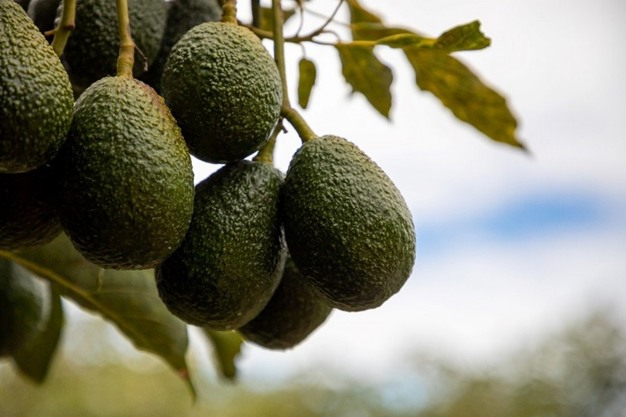Two weeks ago, Rabobank released a report on the global avocado market. Their senior analyst fresh produce, David Magaña, now provides a more detailed update on North America's avocado market.
When it comes to avocado exports, Mexico will likely surpass 1.5m metric tons by the end of 2026 while Peru is projected to approach 650,000 metric tons by 2026. Meanwhile, Colombia will surpass Spain and Kenya to become the third-largest avocado-exporting country.
Looking closer at Mexico
Mexico is still the largest producer/exporter of avocados with Michoacan and Jalisco accounting for 81 percent of the planted areas and about 85 percent of total production. (In 2005, Mexico produced 1m metric tons. That grew to 2.5m metric tons by 2022, a development driven by expansion in the planted areas.)
However, that rate of expansion is expected to ease given the increasing pressure on resources such as water and land. While Hass avocados are the dominant variety being shipped from Mexico, "some Hass-like varieties will be adopted which have higher yield potential and improved efficiency," says Magaña. "Hass will continue to dominate for the foreseeable future."
"Exports from Mexico to the U.S. continue to set new records," says Magaña. In 2023, Mexican imports to the U.S. reached a record of 1.13m metric tons–a 16 percent year-over-year (YOY) increase. The proportion of Mexican avocado exports to the U.S., relative to total exports was also 84 percent–up from 79 percent in 2021.
 When it comes to avocado exports, Mexico will likely surpass 1.5m metric tons by the end of 2026 while Peru is projected to approach 650,000 metric tons by 2026.
When it comes to avocado exports, Mexico will likely surpass 1.5m metric tons by the end of 2026 while Peru is projected to approach 650,000 metric tons by 2026.
Notably in 2022, when Jalisco gained approval to export avocados to the U.S., exports to Europe dropped significantly. If this trend continues, Mexican exports will increasingly rely on the U.S. market, thus potentially reducing the availability of Mexican avocados in other markets
U.S. consumption and production
"There's been massive growth in avocado consumption over the past 15 years," says Magaña. As of 2000, the per capita availability in the U.S. was about 2 lbs./per person/year–a figure that doubled to 4 lbs./person/year by 2010. By 2020, it was 8 lbs./person/year. "In the next few years, we probably won't see that double again. However, by the end of this decade, my estimate is at least 12 lbs./person/year." He also notes there's room for consumption growth given Chile's consumption rate is 18 lbs./person/year and Mexico is 20 lbs./person/year. "It's possible to get to that level because we've seen more consumers buy avocados on a regular basis and more restaurants including them in their menu items."
As for U.S. production, more than 90 percent of it is concentrated in Southern California with 95 percent being the Hass variety.
In fact, over the past decade, the 2022 Census of Agriculture reports that domestic avocado production has declined. In 2022, avocado-bearing acreage in California was just less than 46,000 acres–the lowest it has been since the mid-1970s. Much of this is attributed to factors such as water availability and urban development. "Looking ahead, I think California avocado production is flat to declining. I don't see a lot of growth because there are restrictions in terms of water and land availability, so the U.S. will increasingly rely on imports," says Magaña.
U.S. avocado exports/imports
With that, U.S. avocado exports have declined in recent seasons though destination markets for the fruit still include Canada and some Asian markets. That said, consistent availability and domestic demand means production will continue to be constrained and exports limited.
 Magaña says the Hass variety will continue to dominate for the foreseeable future.
Magaña says the Hass variety will continue to dominate for the foreseeable future.
The report also indicates that during the 2022-2023 marketing year, the availability of avocados in the U.S. surpassed three billion pounds for the second time in history. At 90 percent of the import share, availability is at an all-time high while the export share of production remains limited at 3 percent. Overall availability has increased from 2 lb. per capita in 2000 to 4 lb. in 2010 and that figure is likely to surpass 11 lb. by the end of the decade.
Last year, U.S. avocado imports set a record totaling 1.26m metric tons. (Overall imports increased by 11 percent YOY.) "Of U.S. avocado imports, about 90 percent come from Mexico with an increasing share from Peru, the Dominican Republic, Colombia, and a little bit of Chile," says Magaña. Imports from Mexico increased by 19 percent YOY while imports from Peru declined by 39 percent YOY.
In the coming years, the U.S. will increasingly rely on imports with Mexico's share expected to expand throughout most of the year.
The first four months of the year are also the key months for avocado arrivals–this year, total arrivals in the U.S. approached 1.08bn lbs. which is a three percent YOY increase according to USDA.
At the same time, shipping point prices for mid-sized avocados (48s) have been consistently higher year over year. Looking ahead to this summer, prices will likely increase as volumes from Peru and California will be down.
South American update
Last year, South American exports reached a record 852,400 metric tons. This includes modest growth of 3.8 percent from Peru, stable exports from Chile at 1.5 percent, and expanded exports from Colombia, Brazil, and Ecuador.
Peru's only modest growth is largely due to El Nino's effects–a phenomenon felt more this year than last in terms of sizing and ProHass anticipates 16 percent less fruit for 2024. Colombia is expected to maintain its growth trajectory from last year at +16 percent and that makes it the second largest South American exporter. Chilean exports were expected to recover this year after two challenging seasons but those exports may be limited due to fast-growing domestic demand. Brazil also has a strong consumption rate but it prefers green-skinned varieties of avocados.
However, there is increased price segmentation among South American producers–Chile stands out with historically a 47 percent difference compared to other countries. "This season, we see avocados from Mexico and the prices–which have been higher compared to the unusually low prices of 2023–across sizes are that larger avocados are seeing large YOY on prices. Mid Sizes are still about 40 percent to 50 percent higher this year than last. On smaller sizes, those are about the same price as they were a year ago," says Magaña. "One factor creating this is likely a higher availability of smaller sizes, particularly from Mexico which has been in a drought for the past 12-18 months."
On exports from South America, Europe is the primary target with North America coming in second though the latter has lost 8 percent share to Latin America and Asia. Specifically in Peru, avocado exports are expected to continue to grow but at a slower pace because new plantings have decelerated due to margin pressures.
As a backdrop to these developments, in South America, avocados are increasingly dominated by large-scale companies–a trend that's intensified in the past decade in Peru, Colombia, and Chile. Further consolidation is expected.
Other growing regions
Meanwhile Africa is seeing steady growth in avocado production with Kenya taking the lead though Morocco's growing in exports as its trees mature. "I don't see significant volume coming from Africa to the U.S. market. They mostly go to the European markets," says Magaña.
In New Zealand though, estimates show a 35 percent decline in production for the 2023 -2024 crop, largely due to the impacts of Cyclone Gabrielle. While total export volume declined 51 percent YOY, there was growth into new markets such as Canada.
 For more information:
For more information:
Melanie Bernds
Rabo AgriFinance
[email protected]
https://research.rabobank.com/










